What Type of Face Covering Should I Use?
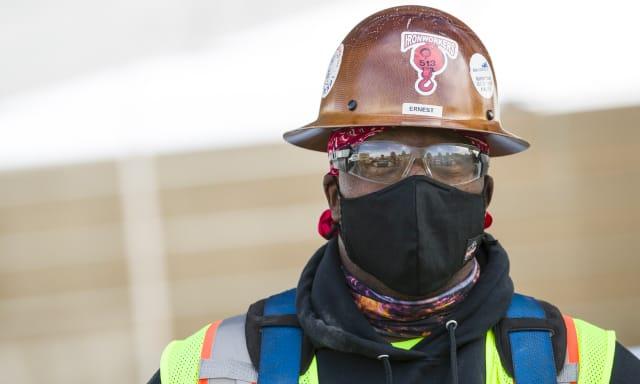
How to choose the best face mask for your job site
Remember the stone ages when we all just went around spitting in each other’s faces like a bunch of angry alpacas? That’s so 2019 BC (Before Covid). Most of us understand by now that covering your mug is the way to go, but it can be tough to decipher between all the options available. At the end of the day, not everybody needs an N95—but everybody needs something.
HOW DO FACE COVERINGS WORK?
Covid-19 is primarily spread via airborne particles. Masks filter airborne particles. If that’s enough ‘splainin for you, feel free to skip to the “What Face Covering Should I Choose?” section. Want to nerd out with us? Read on.
Face Covering Filtration Process
The filtration process of most face masks works in generally the same way. Layers of fibers create a veritable obstacle course of fabric barriers that respiratory droplets and airborne particles (a.k.a. aerosols) try to avoid as they're carried through the mask with the air stream. Picture Han and Chewie dodging through an asteroid field in the Millennium Falcon. Or… perhaps checking out this great visual demo from The New York Times might be more helpful.

Large particles are most likely to succumb to gravity or get caught up in your mask’s fibers. Contrary to what you might think, small particles are not the most difficult to trap as they tend to be more electrostatically attracted to the fibers, increasing their chance of being captured. Medium particles are the trickiest little SOBs—avoiding capture as they follow the air flow around fibers.
So, how does the coronavirus size up? Though among the smallest, it often travels within larger particles. But regardless of where it weighs in—the fibers within your face covering are proven to be a crucial first line of defense.
Face Covering Filtration Efficiency
Filtration efficiency is the metric used to describe how effectively a material traps particles. The major considerations affecting a face mask’s filtration efficiency are the material’s weave and fit, along with the amount of breathing space between mouth/nose and the face cover.
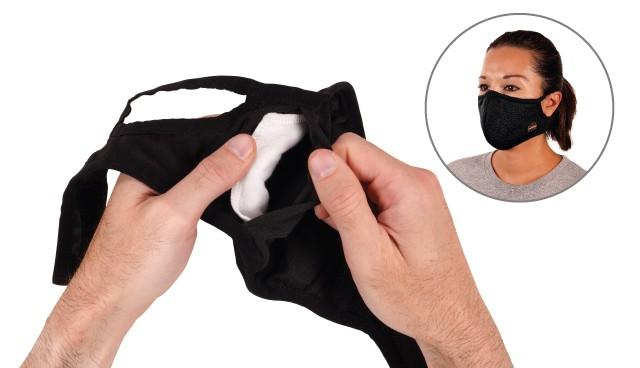
Materials
The harder you make it for droplets and particles to navigate through a battlefield of fibers, the better the chances they’ll get captured along the way. Among cloth coverings, this makes multiple, tightly woven layers the best bet. Options for adding a multi-layer disposable filter insert up the ante, making it even more difficult for droplets and particles to escape. N95s are a different beast entirely—made of a nonwoven synthetic material with an electrostatic charge able to attract and capture at least 95% of elusive medium-sized particles.

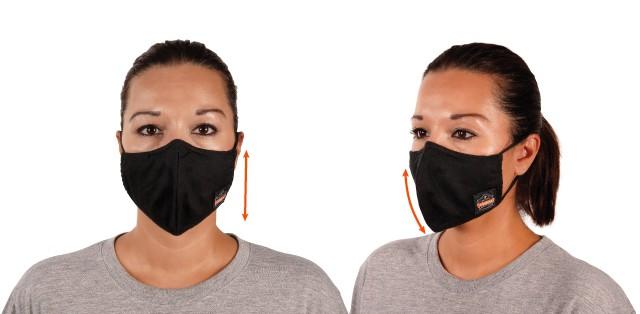
Fit
As air will always take the path of least resistance, aerosols will leak out of open spaces created by an ill-fitting mask. Look for face coverings with a large surface area that fit snugly around the contours of your face and allow for a certain degree of customization––different sizes, fit adjustments, nose pieces, etc. Added bonus: a better fitting mask will also reduce pesky glasses fogging.
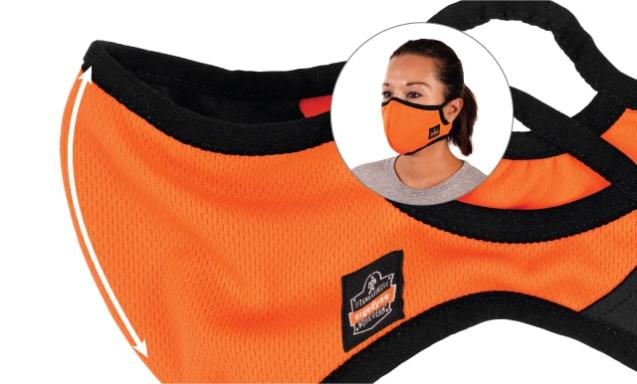
Breathing Space
A more structured mask that lifts the material up off the face (creating somewhat of a “tent” effect) creates a larger filtration and breathing zone to slow down air and catch particles—increasing the chance of encountering a fiber. Not to mention, you won’t get a mouthful of mask every time you inhale and you’ll be a heck of a lot easier to hear.
Face Covering Breathability
All of that filtration efficiency is fine and great, but it’s important to note that tightening a fabric weave or adding layers will increase the resistance to airflow—an effect that can feel suffocating to the wearer. That high airflow resistance can also push air unfiltered through any gaps on the edge of a mask instead of through the filtration material.
While it may seem counterintuitive, a lower airflow resistance will usually make the mask more comfortable and will allow more air to flow through the filtering material. Responsible sellers will report not only how well a face mask filters, but also how well it breathes—the best options will provide a good balance of each.
WHAT FACE COVERING SHOULD I CHOOSE?
Most American workers have been identified as operating within the “Low” to “Medium” level of risk exposure according to OSHA’s Worker Exposure Risk Pyramid. Understanding the nuance of specific applications and exposure risks is key, and selecting the most appropriate face covering for your situation is a balance of filtration level, breathability and comfort.
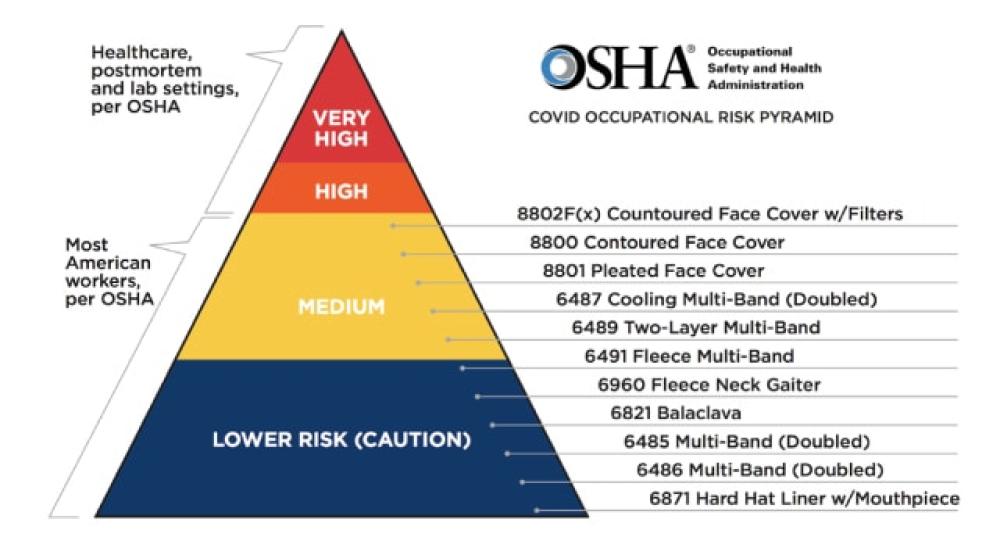
The airline industry is a great case study for how a worksite might implement different protective solutions. Working in confined and heavily-trafficked spaces, flight attendants would necessitate the highest level of available filtration. On the opposite side of that spectrum is the ground crew, who are more easily able to distance on the job. These workers might benefit most from a thinner material that provides less protection but more breathability for comfort and safety during strenuous physical tasks. Other workers throughout the airport fall somewhere in between and, depending on their daily tasks, might elect to wear a multipurpose face covering that provides a more even balance of breathability and filtration.
Lower Risk Exposure
- Minimal contact with public and other co-workers; outdoor work
- Recommended Face Coverings: Multi-bands, neck gaiters, balaclavas
- Why: Easy to don/doff, comfortable breathability
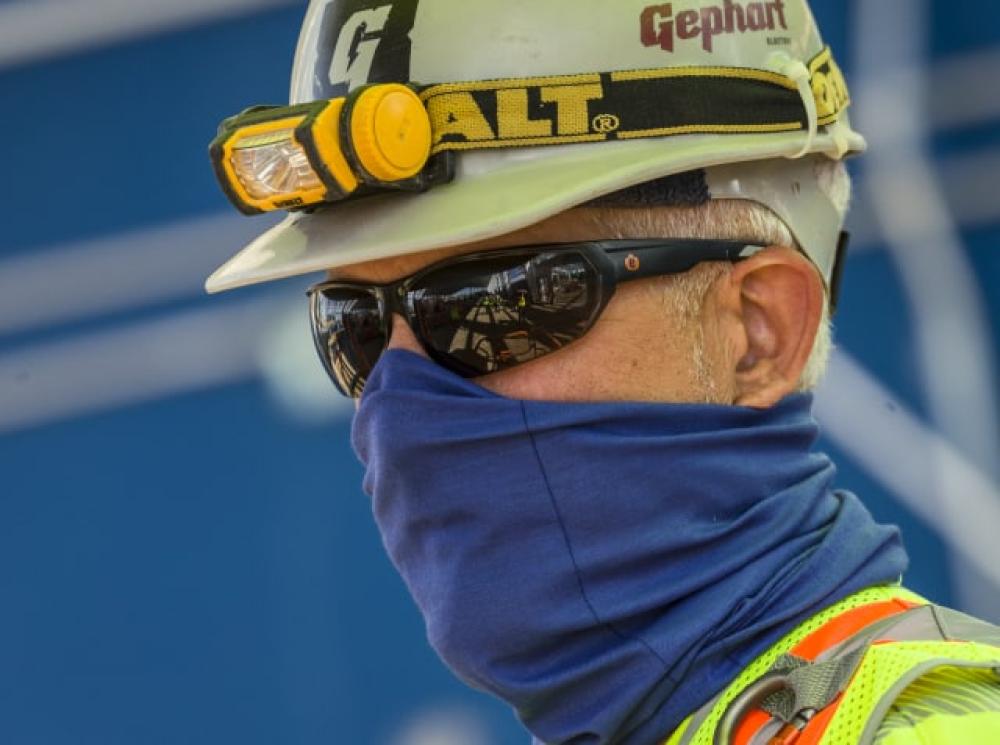
Multi-bands, neck gaiters and balaclavas are suitable for lower risk work environments that might necessitate higher breathability (or warmth—sup, winter) and can be kept around the neck and pulled over mouth and nose as needed, providing other benefits in the process, like protection from sun, wind and cold. Most multi-bands and neck gaiters can be folded over to achieve higher levels of protection compliant with CDC and WHO recommendations for two layers of protection.
Medium Risk Exposure
- Frequent contact with public and coworkers; indoor/outdoor work
- Recommended Face Coverings: Dual-layer or filtered masks, surgical masks
- Why: Multiple layers of protection, increased filtration
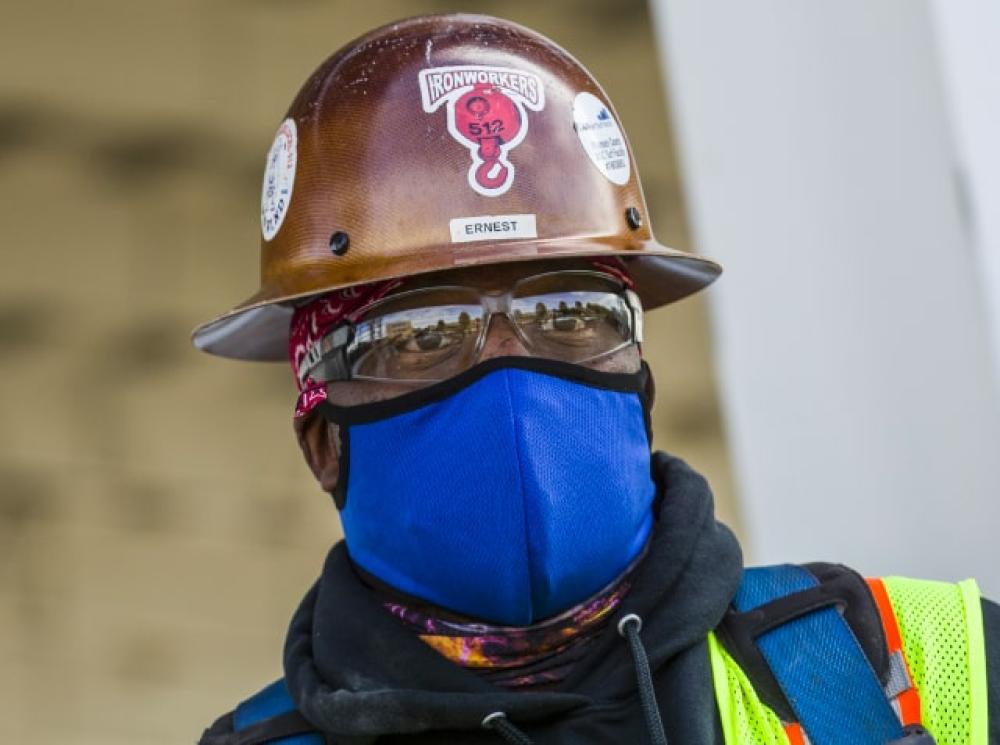
Dual-layer, filtered or surgical-style face masks are an effective option for those working in regular contact or proximity with others. Make sure they fit securely around the mouth and nose and are made with multiple layers, per WHO and CDC recommendations. For maximum comfort during long-term wear, look for masks that are available in different sizes and/or feature adjustable nose clips and ear or head straps.
High/Very High Risk Exposure
- High potential for exposure to known or suspected sources of SARS-CoV-2 (healthcare, lab and post mortem settings)
- Recommended Face Coverings: N95 Mask
- Why: Highest available protection and filtration, NIOSH-approved
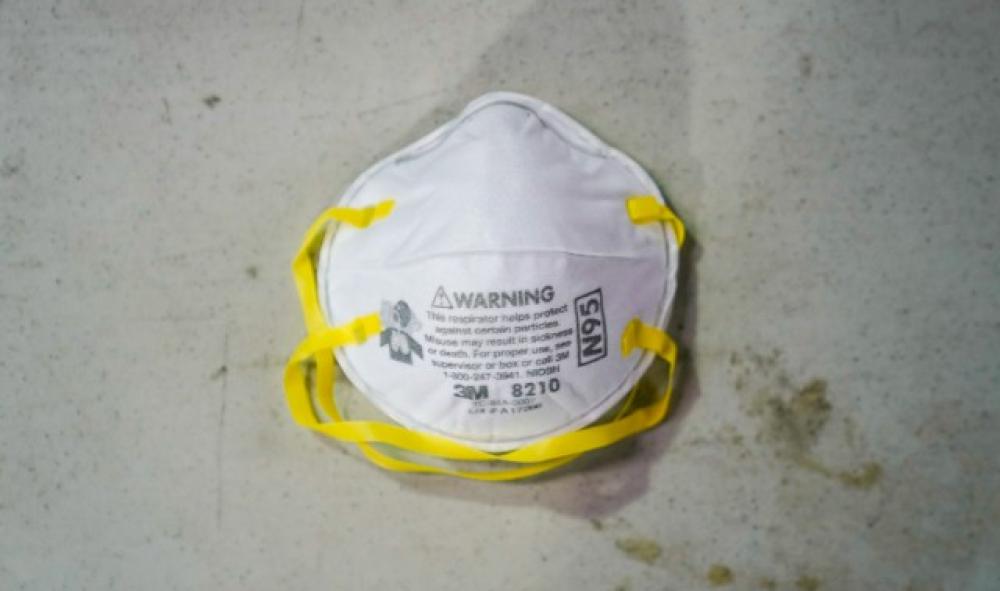
Given the scarcity of N95 masks, they should be reserved for individuals needing the highest possible level of protection—particularly those in the medical field who are in direct contact with Covid-19 patients. N95s are classified as either surgical or industrial. While both types are NIOSH approved to a minimum 95% filtration efficiency, surgical N95s are also FDA-approved and fluid-resistant. Wearing an N95 will provide the highest level of protection against airborne particles, but this defense comes with a trade off of breathability and comfort.
What About Face Shields?
Unlike various types of face masks that fit securely to the face and contain droplets spread by the wearer, the primary function of a face shield is to provide eye or splash protection to the wearer. Though face shields provide a splash resistance layer and may deter wearers from touching their face, they do not effectively contain airborne particles expelled by the wearer. Given lack of evidence supporting the effectiveness of face shields for source control, the CDC does not recommend them as a substitute for face masks.
ARE THERE ANY FACE COVERING STANDARDS?
To date, there is no formal set of standards recommended by the CDC or WHO for measuring the effectiveness of barrier face coverings. Groups such as the American Society for Testing & Materials (ASTM) are currently pushing for a consensus standard that would provide a more consistent way to test and compare masks for those who do not have access to N95 masks.
Additionally, more and more companies are moving toward standardization programs of their own. This means allowing only approved face coverings to be worn by employees. Those decisions are being driven by performance data and manufacturers committed to testing their solutions to widely accepted metrics and sharing that info upon request. The Wild West “anything goes” days are coming to an end. Look for terms like Bacterial Filtration Efficiency (BFE) and Differential Pressure (to measure breathability) to become more commonplace as this develops.
In the meantime, one thing remains clear—any coverage is better than no coverage. On the job site and beyond, the best mask is the one that gets worn.

